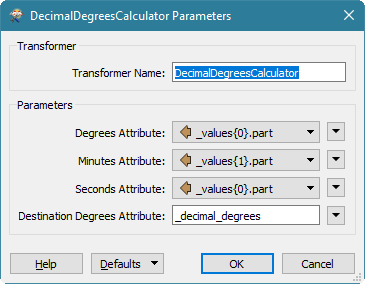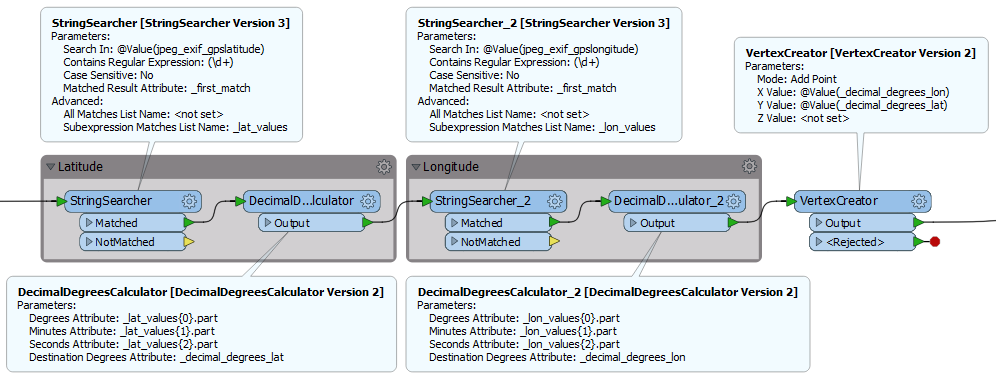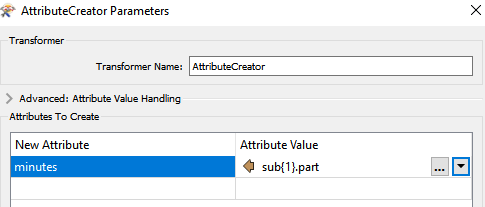I'm looking for a bit of advice on how to correctly use the latitude and longitude information in a jpeg (from the exif information).
I've exposed the jpeg_exif_gpslatitude and jpeg_exif_gpslongitude information in fme but, when i inspect the output, the lat and long are displayed with brackets like this;
(52) (15) (7)
(1) (9) (6)
Which i think equates to Degrees, Minutes and Seconds?
How exactly does this field need to be displayed so i can create a point using the vertex creator then output to shape?
I've tried the StringSearcher with the following:
Search in: jpeg_exif_gpslatitude
Contains Regular Expression: [0-9][0-9]
Which outputs 52 into a new column, but i'm struggling to add the other parts of this field to get a meaninful coordinate entry
Any advice anyone can provide me with would be very helpful
regards














